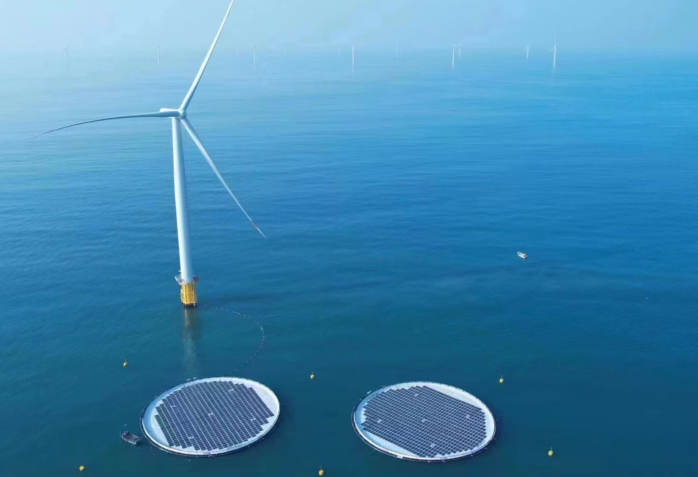Researchers from the Copernicus Institute of Sustainable Development at Utrecht University have studied the effect of environmental factors ─ including irradiation level difference, ambient temperature, wind speed, precipitation, and sea surface temperature ─ on offshore floating photovoltaic systems (OFPVs) to develop regression models that can be used as a first step in predicting yield advantages for OFPV siting versus land-based systems.
“While technology and the mounting type are also important, our approach aims to develop a model that neutralizes these impacts and isolates geography as a determinant factor of PV performance and the differences between offshore and onshore PV installations,” the group said in their report. Two different methodologies were used to find the correlation between the independent variables and the OFPV advantage: Multiple linear regression (MLR) and multivariate polynomial regression (MPR).
In analyzing temperature differences between offshore and inland sites at 20 port cities, the group found that, in almost all of the locations, the water-cooling effect resulted in lower module temperatures at OFPV sites using a steel pontoon structure. In addition, at 70% of the sites, the average irradiation value was higher for the offshore systems compared to the land-based ones. The report notes that even in locations where the offshore sites showed a relatively lower average irradiation level, only 20% of those resulted in a negative energy yield difference.
In simulating the expected offshore performance advantages, the researchers chose locations across the globe from different continents and climate zones. For each site, they used historical data on irradiation, temperature, and relative humidity from the Nasa Power database – collected from January 2008 to January 2018. “In order to calculate the energy yield advantage, we use the equivalent of 1 MWp of panels. For this, an area of about 5200 m would be needed all placed horizontally on various connected pontoons assuming that we use the 310-Wp module,” the report states.
The average energy yield difference for the 10-year period varied between 20% and -4% for the locations used. “The major finding of this study on the energy advantage between offshore and land-based PV systems is that the energy advantage is clearly site-specific. Further, we developed a meaningful regression model which quantifies a very definite correlation between a number of geographical and meteorological values and the energy (dis)advantage of deploying PV panels offshore,” the report highlighted.
The researchers determined that OFPV is not the most viable option for some locations on the globe and that while investment and installation costs will be higher for OFPV compared to land-based systems, offshore systems will not incur costs for land.
The paper concludes that “there will be some use cases where building offshore FPV might appear promising, and in such situations, having access to a geography-based regression model such as this model will help decision-makers better understand their options.”
Their findings are available in the research article “Offshore floating photovoltaics system assessment in worldwide perspective,” published in the Progress in Photovoltaics.
This content is protected by copyright and may not be reused. If you want to cooperate with us and would like to reuse some of our content, please contact: editors@pv-magazine.com.




What I like about the setup is you can rotate the whole farm towards the sun from dawn to dusk…